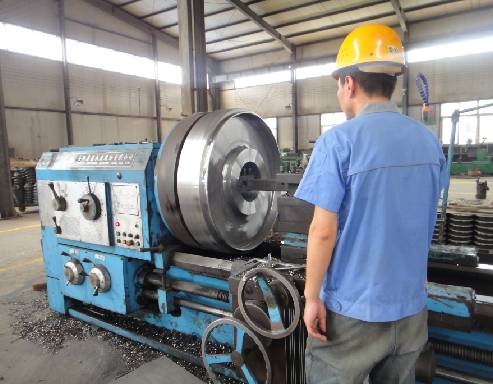 Afrikaans
Afrikaans  Albanian
Albanian  Amharic
Amharic  Arabic
Arabic  Armenian
Armenian  Azerbaijani
Azerbaijani  Basque
Basque  Belarusian
Belarusian  Bengali
Bengali  Bosnian
Bosnian  Bulgarian
Bulgarian  Catalan
Catalan  Cebuano
Cebuano  Corsican
Corsican  Croatian
Croatian  Czech
Czech  Danish
Danish  Dutch
Dutch  English
English  Esperanto
Esperanto  Estonian
Estonian  Finnish
Finnish  French
French  Frisian
Frisian  Galician
Galician  Georgian
Georgian  German
German  Greek
Greek  Gujarati
Gujarati  Haitian Creole
Haitian Creole  hausa
hausa  hawaiian
hawaiian  Hebrew
Hebrew  Hindi
Hindi  Miao
Miao  Hungarian
Hungarian  Icelandic
Icelandic  igbo
igbo  Indonesian
Indonesian  irish
irish  Italian
Italian  Japanese
Japanese  Javanese
Javanese  Kannada
Kannada  kazakh
kazakh  Khmer
Khmer  Rwandese
Rwandese  Korean
Korean  Kurdish
Kurdish  Kyrgyz
Kyrgyz  Lao
Lao  Latin
Latin  Latvian
Latvian  Lithuanian
Lithuanian  Luxembourgish
Luxembourgish  Macedonian
Macedonian  Malgashi
Malgashi  Malay
Malay  Malayalam
Malayalam  Maltese
Maltese  Maori
Maori  Marathi
Marathi  Mongolian
Mongolian  Myanmar
Myanmar  Nepali
Nepali  Norwegian
Norwegian  Norwegian
Norwegian  Occitan
Occitan  Pashto
Pashto  Persian
Persian  Polish
Polish  Portuguese
Portuguese  Punjabi
Punjabi  Romanian
Romanian  Russian
Russian  Samoan
Samoan  Scottish Gaelic
Scottish Gaelic  Serbian
Serbian  Sesotho
Sesotho  Shona
Shona  Sindhi
Sindhi  Sinhala
Sinhala  Slovak
Slovak  Slovenian
Slovenian  Somali
Somali  Spanish
Spanish  Sundanese
Sundanese  Swahili
Swahili  Swedish
Swedish  Tagalog
Tagalog  Tajik
Tajik  Tamil
Tamil  Tatar
Tatar  Telugu
Telugu  Thai
Thai  Turkish
Turkish  Turkmen
Turkmen  Ukrainian
Ukrainian  Urdu
Urdu  Uighur
Uighur  Uzbek
Uzbek  Vietnamese
Vietnamese  Welsh
Welsh  Bantu
Bantu  Yiddish
Yiddish  Yoruba
Yoruba  Zulu
Zulu Understanding Conveyor Rollers and Idlers for Efficient Material Handling Systems
Conveyor Rollers and Idlers Essential Components for Efficient Material Handling
In the world of material handling, efficiency and reliability are paramount. Among the critical components that facilitate this efficiency in conveyor systems are conveyor rollers and idlers. These components may seem simple, yet they play a vital role in the overall performance of conveyor systems used in various industries, from mining and manufacturing to logistics and food processing.
Understanding Conveyor Rollers
Conveyor rollers are cylindrical components that are placed at regular intervals along the length of conveyor belts. Their primary function is to support the belt and the load it carries, allowing for smooth transportation of materials. Rollers are designed to handle different loads and conditions, which means they come in various sizes, materials, and designs. The most common types of conveyor rollers include trough rollers, impact rollers, and return rollers.
1. Trough Rollers These are designed to create a trough shape on the belt, helping to contain and stabilize materials during transport. They are ideal for loose materials, such as gravel, sand, and coal, where spillage can be a concern.
2. Impact Rollers Positioned at loading points, impact rollers are specifically designed to absorb the shock of heavy loads. They prevent damage to both the conveyor belt and the structure of the conveyor system, making them essential for heavy-duty applications.
3. Return Rollers Used on the return side of the conveyor system, these rollers support the belt as it travels back to the loading point. They help maintain the tension and alignment of the belt, ensuring smooth operation.
The Role of Idlers
Idlers are similar to rollers but serve a slightly different purpose. Their primary function is to provide support to the conveyor belt along its return path. Idlers help maintain the belt's alignment and tension, preventing excessive wear and tear. Different types of idlers include flat idlers, trough idlers, and garland idlers, each designed for specific applications.
conveyor rollers and idlers

1. Flat Idlers These idlers have a flat surface and are generally used in light-duty applications. They are essential for keeping the conveyor belt in position, especially in areas where there might be lesser load.
2. Trough Idlers Like trough rollers, these idlers help form a trough shape in the belt, providing additional stability for carrying bulk materials. They are particularly useful in operations handling heavy and loose goods.
3. Garland Idlers These are often used in applications that have an increased belt width. Garland idlers consist of multiple rollers arranged in a way that distributes the load evenly, improving the belt's support.
Advantages of High-Quality Rollers and Idlers
Investing in high-quality conveyor rollers and idlers brings numerous benefits. Firstly, they enhance operational efficiency by reducing friction, which in turn minimizes energy consumption. A well-functioning conveyor system requires less energy to move materials, leading to lower operational costs.
Secondly, these components extend the lifespan of conveyor belts. By providing proper support and reducing wear and tear, high-quality rollers and idlers can significantly reduce maintenance costs over time. They also contribute to a safer workplace by minimizing the risk of belt failure, which can lead to accidents and downtime.
Conclusion
In summary, conveyor rollers and idlers are fundamental components that contribute significantly to the efficiency, safety, and longevity of conveyor systems. Their roles in supporting, guiding, and aligning the conveyor belt are vital across various industries. With the right selection of rollers and idlers tailored to specific applications, businesses can enhance their material handling processes, reduce costs, and ultimately increase productivity. As industries continue to evolve, the importance of these components remains unquestionable, underscoring their critical role in modern material handling solutions.
-
Trusted Conveyor Solutions from Leading Conveyor Idler Roller ManufacturersNewsJun.27,2025
-
Reliable Return Idler Solutions for Efficient Belt Conveyor SystemsNewsJun.27,2025
-
Precision Conveyor Accessories for Streamlined Material HandlingNewsJun.27,2025
-
High-Quality Belt Conveyor Idler Solutions for Efficient Material HandlingNewsJun.27,2025
-
High-Performance Belt Conveyor Pulleys for Reliable Material HandlingNewsJun.27,2025
-
Enhancing Material Handling EfficiencyNewsJun.27,2025





























